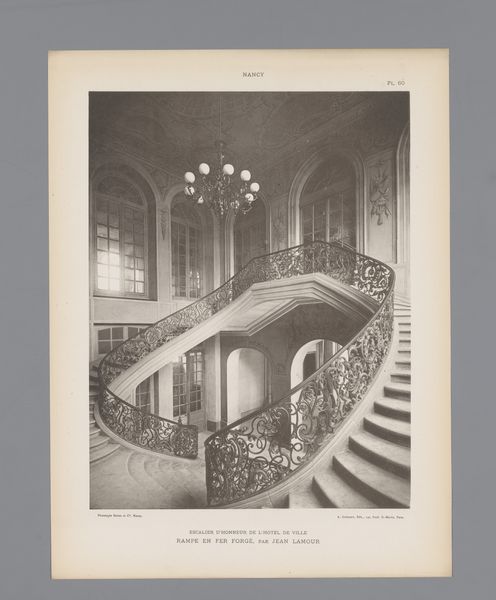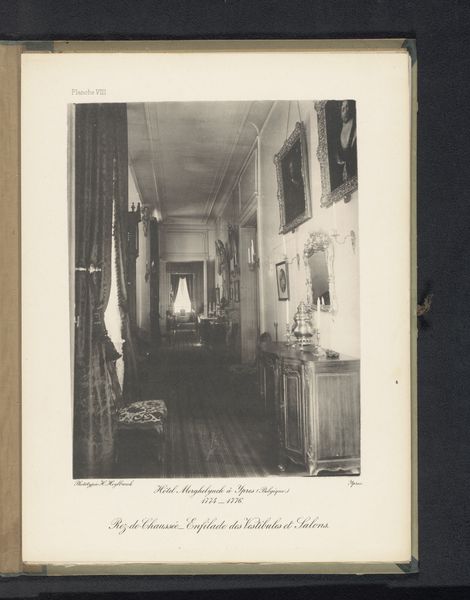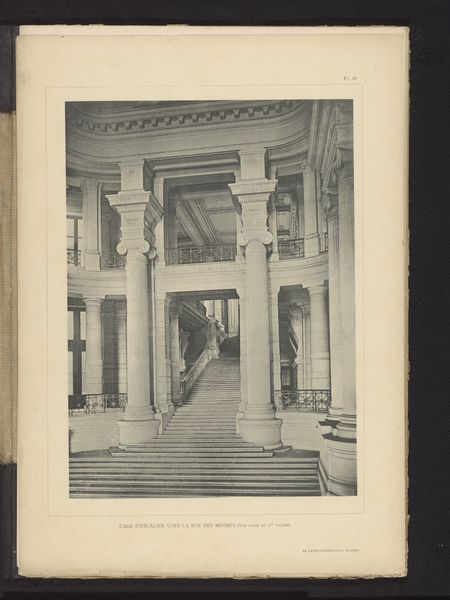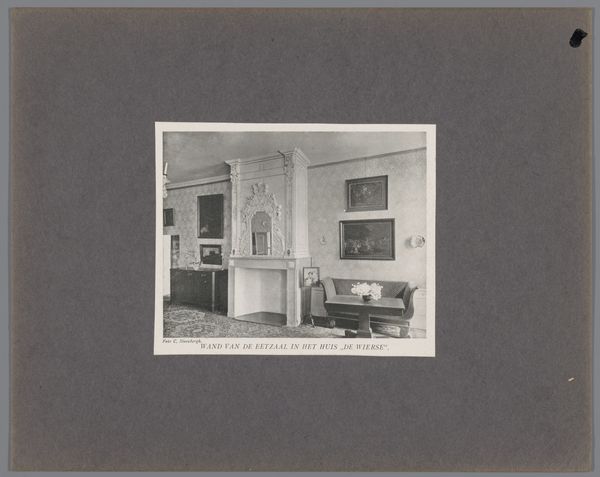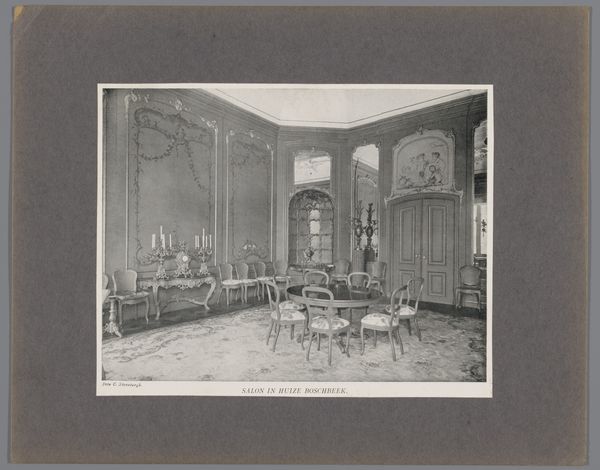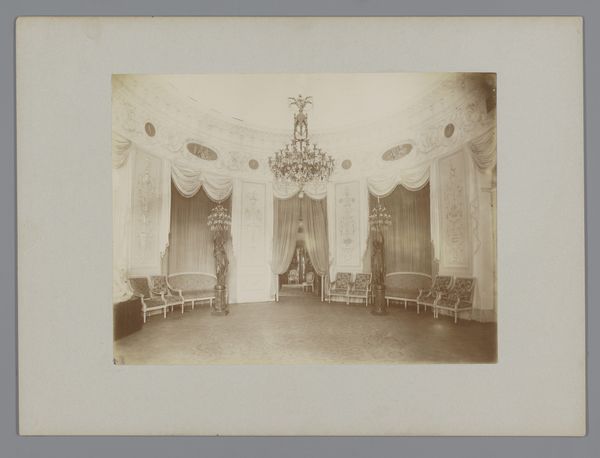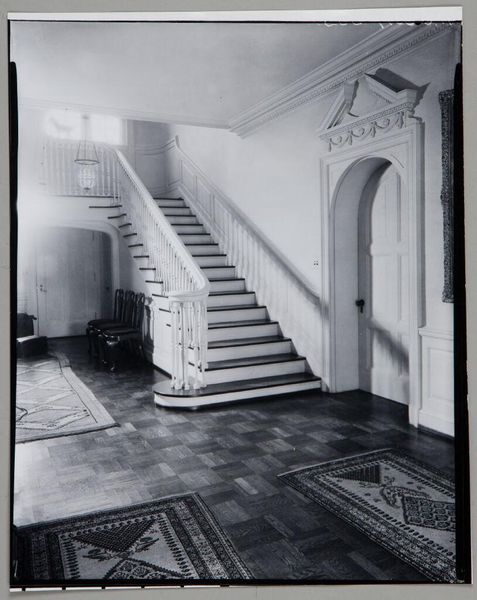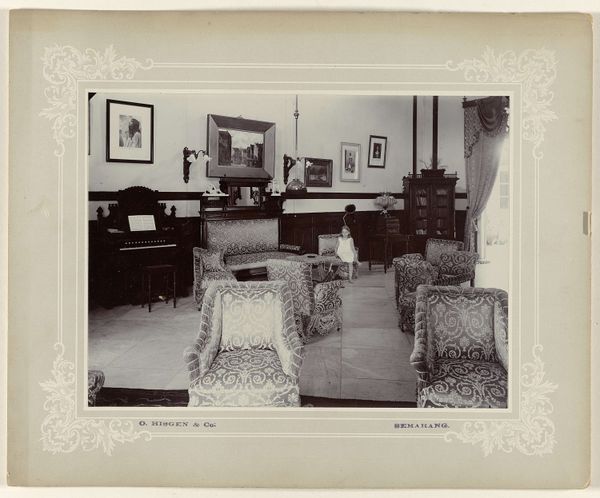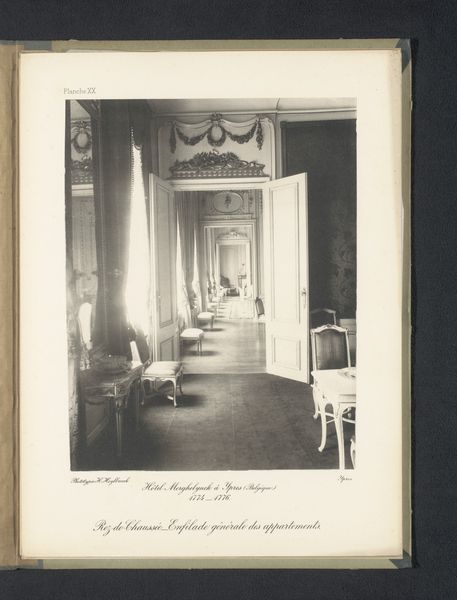
print, photography
# print
#
photography
#
genre-painting
#
monochrome
Dimensions: height 220 mm, width 163 mm, height 344 mm, width 282 mm
Copyright: Rijks Museum: Open Domain
Curator: Looking at this photograph, there’s something undeniably melancholic in its stillness, don't you think? It is quite literally, black and white! Editor: This photographic print, "Trappenhuis in een woning," believed to have been created between 1895 and 1897 by Caroline Gaudard, showcases a staircase inside a home. The image, monochrome as you observed, really offers an interesting glimpse into late 19th century domestic architecture. What elements contribute to this feeling of melancholy that you sensed immediately? Curator: Well, first, the light—or rather, the way the light is captured. The stark contrast emphasizes the sharp lines and shadows, creating a sense of quiet austerity. And that long carpet on the stairs, leading up into… nothing that is immediately knowable. Also, there are some draped fabrics hanging on the left, with heavy folds. They add to the composition’s weight. Editor: Precisely. Gaudard's control over the photographic process here is impressive, particularly considering the technological constraints of the period. The quality of the print allows us to examine the material culture of the time, doesn't it? The craftsmanship apparent in the balustrade, the way the stairs are made…These details point to a certain class structure and the labor involved in maintaining such spaces. What is made immediately apparent is how this artwork documents an instance of history with the means that it has. Curator: Yes, absolutely. Thinking of labor and history reminds me a bit of genre painting. Yet the way it avoids any figures makes it more striking and starkly formal— almost like a stage set awaiting a performance that never comes. The mood and material— both come across intensely! Editor: The absence of people allows the architecture itself to speak. But in this case, the silence communicates as strongly as any portrait or busy scene, and raises important questions about our human relationship to dwelling and work spaces. This artwork does prompt valuable reflections, doesn't it? Curator: Agreed. What resonates with me now is that this staircase could be located in an apartment anywhere, any time, even the future! What at first seems to convey loss or despair now becomes the architecture for what will emerge after, no matter what changes! It might seem banal but… the photo actually has me feeling energized to confront change, both aesthetically and culturally.
Comments
No comments
Be the first to comment and join the conversation on the ultimate creative platform.


